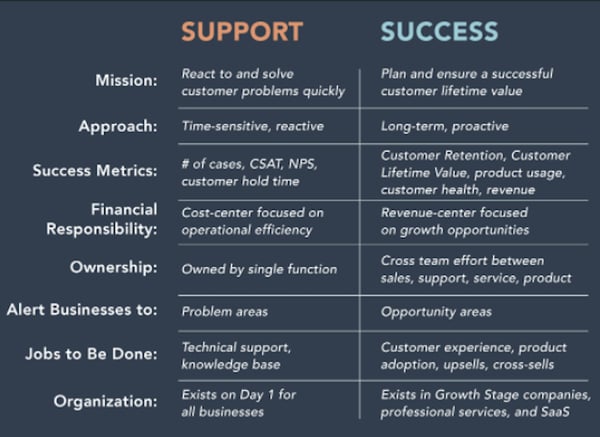NOW IS THE TIME TO EXCEED CUSTOMER EXPECTATIONS
Customer support, service, and success are all critical to your business's prosperity and growth. Often these areas are confused and referred to interchangeably. The results of each of these potential interactions play a huge role in how customers feel about your business and your brand. It’s important to recognize the difference of each one and treat them all as a major factor on your business’s reputation, customer retention and bottom line.
![]() In today’s unprecedented times, customer support, service and success are all taking on a greater role. As anxiety’s are heightened, complications, product problems and business issues are the last thing anyone wants to encounter. Our lives have been upended, we strive for normalcy and that includes businesses meeting or exceeding our expectations.
In today’s unprecedented times, customer support, service and success are all taking on a greater role. As anxiety’s are heightened, complications, product problems and business issues are the last thing anyone wants to encounter. Our lives have been upended, we strive for normalcy and that includes businesses meeting or exceeding our expectations.
If your business has slowed due to the shut down or effects of the coronavirus, now might be the perfect time to evaluate these three areas of your business.
Let’s look at the differences of each of these areas.
Customer Support
Customer support is the process of solving customer issues immediately and effectively. Whether answering phone calls, responding to emails, answering live chat questions, monitoring tickets, or replying to inquiries via social media, the goal of any customer service initiative is to mitigate the challenges customers are facing as soon as possible. Every interaction a business has with a customer should be initiated and ended by the customer.
Customer Service
Customer service is more proactive than customer support. Customer Service suggests wants/needs to the customer before they realize they are in need. Whether it’s offering a discount on a refill or suggesting it is time to reorder maintenance parts to keep products in line with a warranty. When you provide both proactive (Customer Service) and reactive (Customer Support) options for your customers, you're focused on their continued success.
Customer Success
Customer success is offering ideas or suggestions to a customer that may align with their needs or past behaviors. Using knowledge or insight to suggest ways to improve their business. It provides value.
For example, suggesting a new media platform that better reaches their target audience or suggesting new ways to increase market share.
To better understand some of the differences, our partner at HubSpot have provided this chart:
 Ensuring that your business has a strategy to support each of these areas is critical not only in today’s environments but in the long=term growth of your organization. The world is currently much more dependent on digital engagement and solutions. It is critical that each of these customer-focused areas is prepared to respond to your customers on whatever channel they choose.
Ensuring that your business has a strategy to support each of these areas is critical not only in today’s environments but in the long=term growth of your organization. The world is currently much more dependent on digital engagement and solutions. It is critical that each of these customer-focused areas is prepared to respond to your customers on whatever channel they choose.
The most successful businesses are those that ensure the continued delight of their customers. Ensuring that your customers feel supported and have a proactive response to their needs will turn them into loyal advocates that will be there in good times and in bad.

